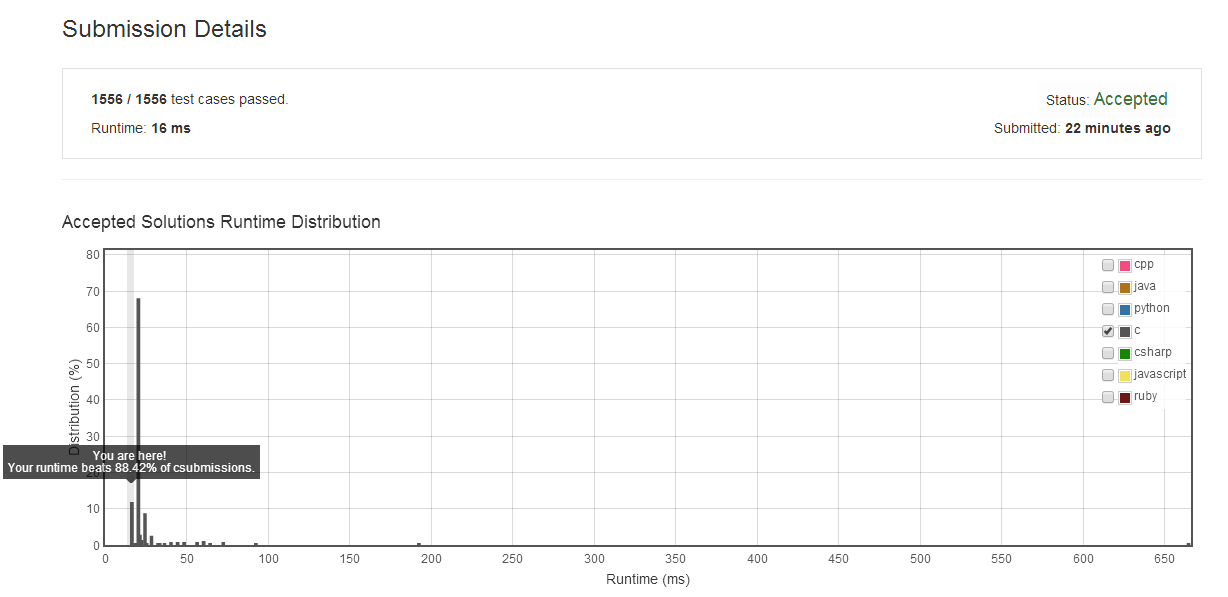每天一道在线编程题
问题:Add Two Numbers
You are given two linked lists representing two non-negative numbers. The digits are stored in reverse order and each of their nodes contain a single digit. Add the two numbers and return it as a linked list.
Example:
Input: (2 -> 4 -> 3) + (5 -> 6 -> 4) Output: 7 -> 0 -> 8
解决方案:(C语言)
/**
- Note: The returned array must be malloced, assume caller calls free(). */
/**
* Definition for singly-linked list.
* struct ListNode {
* int val;
* struct ListNode *next;
* };
*/
struct ListNode* addTwoNumbers(struct ListNode* l1, struct ListNode* l2)
{
//p1,p2分别用来遍历l1,l2,而p用来指定当有进位时申请的新节点,pre用来指定p1的前节点,以便链接新节点或释放多余节点
struct ListNode *p,*p1=l1,*p2=l2,*pre;
p=(struct ListNode*)malloc(sizeof(struct ListNode));
p->val = 1;
p->next = l1;
l1 = p;//l1指向加了新节点p的链表
pre = l1;
p1 = l1->next;
int sum = 0;//sum用于求和,为了提高效率(不重复使用指针取值运算)
int carry = 0;//表示两0-9数字相加时的进位
while(p1 !=NULL && p2 != NULL)
{
sum = carry + p1->val + p2->val;
carry = sum / 10;//获取进位
p1->val = sum % 10;//获取进位后的值
pre = p1;
p1 = p1->next;
p2 = p2->next;
}
if(p2 != NULL)
p1 = p2;//当两个数位数不等时继续遍历
while(p1 != NULL)
{
sum = carry + p1->val;
carry = sum / 10;
p1->val = sum % 10;
pre->next = p1;
pre = p1;
p1 = p1->next;
}
if(carry)//最后还有进位的话,需要把最开始申请的节点链入
{
pre->next = l1;
l1 = l1->next;
pre->next->next = NULL;
}
else//最后没有进位的话,需要把最开始申请的节点链入
{
l1 = l1->next;
free(p);
}
return l1;
}运行效率:

【注意】本文属于作者原创,欢迎转载!转载时请注明以下内容:
(转载自)ShengChangJian's Blog编程技术文章地址:
https://ShengChangJian.github.io/2016/06/Add-Two-Numbers.html
主页地址:https://shengchangjian.github.io/